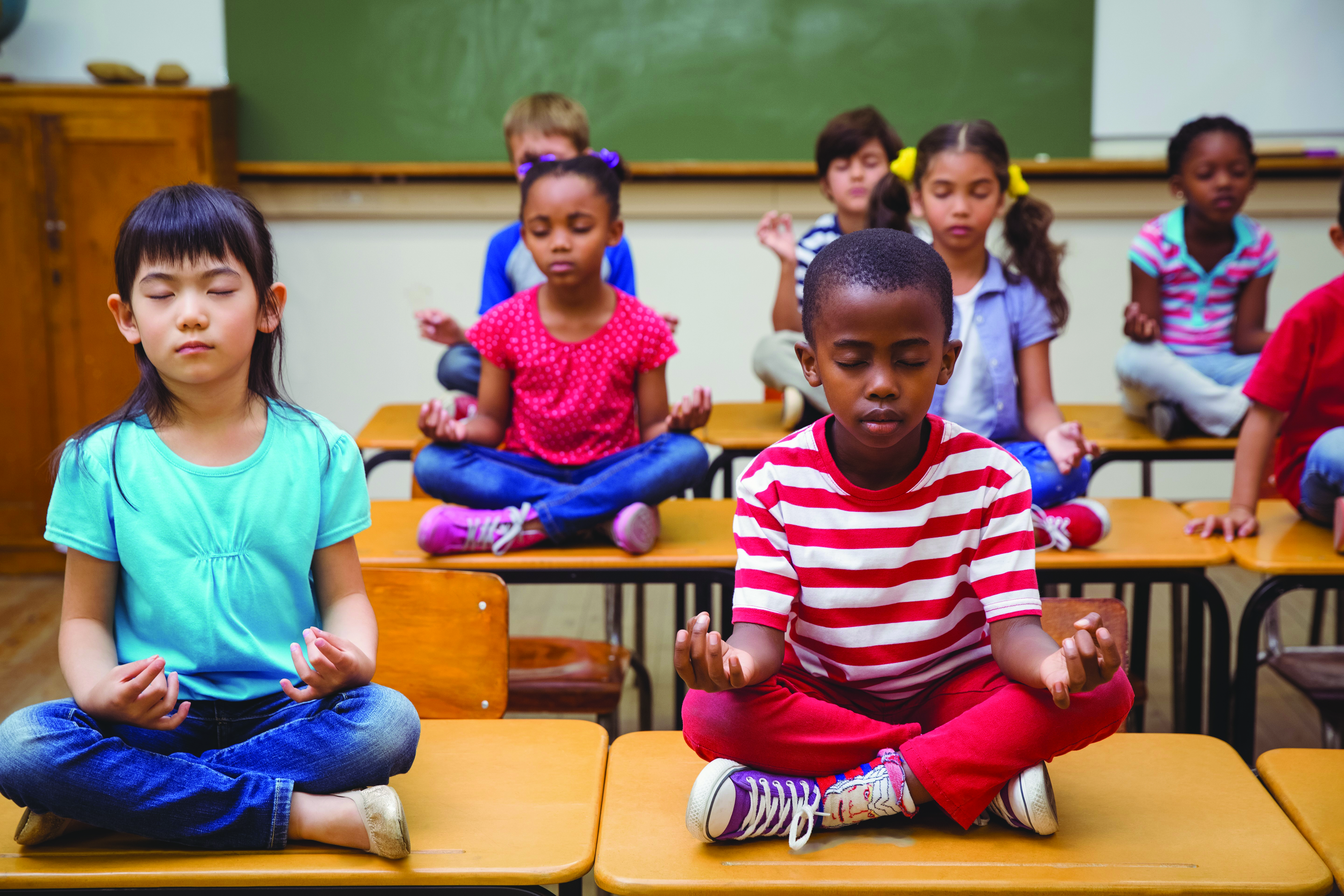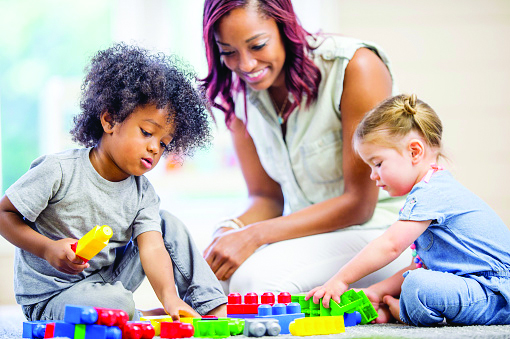

Carrie A. C. Clark, Assistant Professor, Educational Psychology
Holly N. Hatton-Bowers, Assistant Professor, Early Childhood Extension Specialist
Carrie L. Gottschalk, Extension Educator
Dipti A. Dev, Assistant Professor, Child Health Behaviors Extension Specialist
Lisa M. Poppe, Extension Educator
We now know that self-regulation is extremely important to children’s success in school. Kids who struggle to regulate their emotions, attention, and behavior are more likely to have difficulties following teachers’ instructions, coping with schoolwork, and getting along with other children. Many people have tried to create interventions to help young children develop self-regulation strategies, although a lot of testing still needs to be done to figure out what works best and for which children. Based on the interventions that have shown some success, here are some tips for helping your child to self-regulate.

The parts of our brain that are involved in reacting to emotions can quickly hijack our ability to reason. Think of all the times you regret saying something because you were wound up or overly emotional. If only you’d pressed pause to think about your reactions before blurting out your feelings. Kids need this pause space too, although it is difficult for them to recognize when they need it.
Often, when our child is upset or emotional, we feel the immediate need to do something about it–to argue back, to cuddle her, to yell, or to put our face right up close to hers so that she will concentrate on what we have to say. However, the best strategy is to press pause and wait for your child to calm down. By doing this, you give her the opportunity to practice calming herself down. Once she is calm, she will be in a much better state to express what she wants.
Your child will use cues to let you know she needs to press pause–she might back up against a wall, fold her arms, avert her eyes, or run to the other side of the room. Don’t take this personally and don’t get into a battle of wills chasing your child around the room. Instead, take the opportunity to step away and take a break yourself, process your own emotions, and demonstrate a calm response for your child. A parent’s own ability to self-regulate is an important predictor of the child’s success at self-regulating.
One simple strategy that you can model and teach your toddler is to close your eyes and take three deep breaths. For preschool-aged children, you can teach a breathing strategy called “Take 5.” Teach your child to breathe in as she slowly raises each of her fingers on one hand, and then to breathe out as she closes each finger.
For older preschoolers, you can use the “Turtle Shell Technique.” When your child is mad or overexcited, teach him to go into a quiet corner, hug himself and take a breath, then come and tell you what the problem is and how he feels about it.
Model to children how to breathe deeply. Use props like bubbles, feathers, or pinwheels. Show children how you breathe in through your nose while counting to 5, fill your belly with air, and then breathe out of your mouth for three seconds. Do this four or five times until you feel more relaxed. A 3-year-old may only do this a few times and will breathe in and out through his mouth. This is okay as it is helping him become aware of the power of his breathing, and begins teaching him how breathing can bring him out of a reactive, out-of-control-feeling.
Have children lay on their back while they practice deep breathing by placing a small stuffed animal on their belly. This will help them see how their stomach rises with each breath.
Have children pretend to put various vegetables into a bowl of hot soup. Have them smell the soup, breathing in the smell of the vegetables. Pretend the soup is still hot and have the children gently blow on the bowl of soup to cool it down so they can eat it.
It isn’t easy for your child to remember to use these techniques when he starts to lose his cool. The key is to practice regularly when your child is calm. If you make these strategies a habit, your child will be more likely to use them when he starts to spin out of control. Remember, you can’t protect your child from feeling stressed out, angry, or sad. What you can do is teach him ways of managing his stress.

Mindfulness is about acceptance, paying attention to one’s experiences through the mind and senses, and being nonjudgmental, meaning not labeling things as bad or good. Children begin to learn feelings come and go, are temporary, and constantly change. Mindfulness helps to develop a child’s ability to deal effectively with these emotions. Among children age 5 and older, lots of studies find that mindfulness training for children increases attention and social emotional awareness. It helps children learn to react less automatically or impulsively. There are programs being used in preschools, such as the 12-week Kindness Curriculum, which uses mindfulness-based activities and strategies, like music, movement, and books. A favorite activity for these children are “Belly Buddies,” in which the children are instructed to place small stones on their bellies while laying on their backs and listening to music. They are asked to notice what it feels like to feel the stone rise and fall as they breathe in and out. Programs such as these find that children have better self-regulatory abilities, such as paying attention, emotional control, and prosocial behaviors, like kindness.
As adults we are good at using cues in our environment to help us self-regulate. When we sit down at work, our desk and chair are cues that we are in work mode and should pay attention. When a colleague checks his watch, we realize it is time to wrap up the meeting. Because we are able to hold these cues in our attention spotlight, we also don’t need lots of reminders.

Toddlers are not good at picking up on cues in the environment but, just like adults, they find it easier to self-regulate when the signals in their environment are clear. This means that we, as adults, can help by providing clear physical reminders for children. For instance, telling a preschooler that she should put her finger on her lips is a good, physical cue that she should stop playing and listen. Start with subtle cues–a gentle touch on the shoulder may be sufficient to get your preschooler’s attention. If this doesn’t work, add a little more assistance by telling your child what you’d like her to do with the simplest language possible—“put the piece of paper in the trash, please.”
If this still doesn’t work, step up the support and show your child what you would like her to do. Related to this, children from homes with busy, unpredictable, and irregular routines are more likely to have difficulty self-regulating. Consistent, steady, scheduled meal, bath, and bedtime routines become clear cues for children to understand what behavior is expected of them and can help them to manage changes between different activities.
As parents and educators, our children learn about emotions from us. For instance, a baby learns that when his mother smiles and cuddles him, he is in a safe, pleasurable space. Later, he learns that the label for this state is “happy.” Being able to recognize that we are feeling sad, anxious, or excited is important for our sense of self and can help us manage and regulate those emotions–this is where parents and educators can help. For instance, if Caroline starts to yell and throw a tantrum in the supermarket, you can show her that you recognize her emotions by saying, “I know you are feeling angry and frustrated because you want that candy, but we need to eat healthy food.” This type of emotional coaching helps preschoolers to develop self-regulation, because it not only teaches children labels for their emotions, but also helps them to realize that they are responsible for managing those emotions.
You can also encourage your child to be mindful and aware of his self-regulation strategies by saying, “How did that make you feel?” or “What did you do that helped you feel better? Do you think you would do that next time too?” Of course, younger children may not have the language skills that allow them to clearly express themselves. Language gives children a helpful new tool for expressing their wishes and planning their actions. Before they have this tool, it can be very frustrating for children to express their needs. Again, simply showing your child that you see his gestures and signals can help him feel that he has control over his environment without becoming frustrated or upset. When your child tries to communicate in a positive way, show that you recognize his efforts by saying, “yes, that is a cute bunny, isn’t it?”
Play is very important for helping children to develop self-regulation. Pretend play, especially, provides a safe space for children to practice using the types of mental skills that help them to self-regulate. Pretend play involves planning and organizing, imagining yourself in the shoes of others, imagining what is going to happen next, and experiencing and deciding what to do about emotions (e.g., dolly feels scared). These types of skills are all useful for self-regulation.
As a parent or teacher, you can help to build children’s self-regulation through play. Let your child practice decision-making by allowing her to lead the play activities and choose her role. Your role is to slowly introduce new ideas and story lines. For example, if dolly is going to the doctor, you can ask whether your child would like to check dolly’s temperature. Allow your child to explore this new idea without rushing to a new one too quickly. There are other types of games you can play with children to encourage them to pause and think about their actions. These include “Simon Says,” freezing games, or games like red light, purple light, in which children are encouraged to respond to colors with specific actions (red means go, purple means stop) and then reverse the rules (purple means go, red means stop).

Your child will generally look to you to solve problems for her. Obviously, this is one of your primary roles as a parent or teacher, but these moments can also be great opportunities for children to practice taking charge of their own behavior. For instance, if your child is trying a difficult puzzle, don’t rush to help immediately. First, sit back and see what your child is able to do for herself. If she is struggling, quietly reposition the puzzle pieces so that the correct piece is within reach. Imagine the sense of satisfaction your child will get when she discovers she can do it alone.
Parents can become exasperated when their children don’t seem to be able to control their impulses or their emotions, when they only remember one instruction out of a list of four, or when they refuse to stop one activity and begin another. Brain systems that support self-regulation take years to mature, and children will often depend on you to help them manage their emotions and behavior.
Just like you, your youngster will also have good and bad days, only his bad days will seem doubly bad because he hasn’t developed the ability to recognize that he is feeling tired and crabby and needs to do things to manage these feelings. On these days, take time to recognize the skills your child already has that you have helped him to develop: that first time you were able to sleep through the entire night because your baby learned to manage his sleep routine; the time he learned to sort his toys into two piles based on their shape; the first time you noticed her sharing a toy with another child. Each of these skills is a little milestone in your child’s development of self-regulation, and each step will help in his journey of becoming an independent, healthy adult.
Cowan, Megan. “Tips for Teaching Mindfulness to Kids.” Greater Good. 13 May 2010. Web. http://greatergood.berkeley.edu/article/item/tips_for_teaching_mindfulness_to_kids/.
Perry, Bruce Duncan. “Self-Regulation: The Second Core Strength.” Scholastic. Web. http://teacher.scholastic.com/professional/bruceperry/self_regulation.htm.
Siegel, D. & Bryson, T.P. (2011). The Whole Brain Child: 12 Revolutionary Strategies to Nurture Your Child’s Developing Mind. Delecorte Press.
This publication has been peer reviewed.
Nebraska Extension Publications are available online at http://extension.unl.edu/publications.
Extension is a Division of the Institute of Agriculture and Natural Resources at the University of Nebraska–Lincoln cooperating with the Counties and the United States Department of Agriculture.
University of Nebraska–Lincoln Extension educational programs abide with the nondiscrimination policies of the University of Nebraska–Lincoln and the United States Department of Agriculture.
Copyright © 2017, The Board of Regents of the University of Nebraska on behalf of the University of Nebraska–Lincoln Extension. All rights reserved.